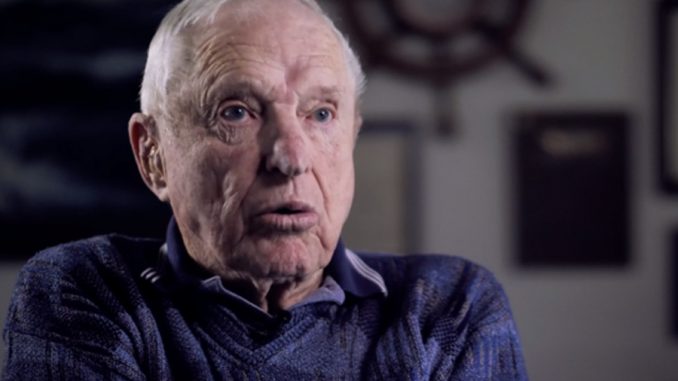
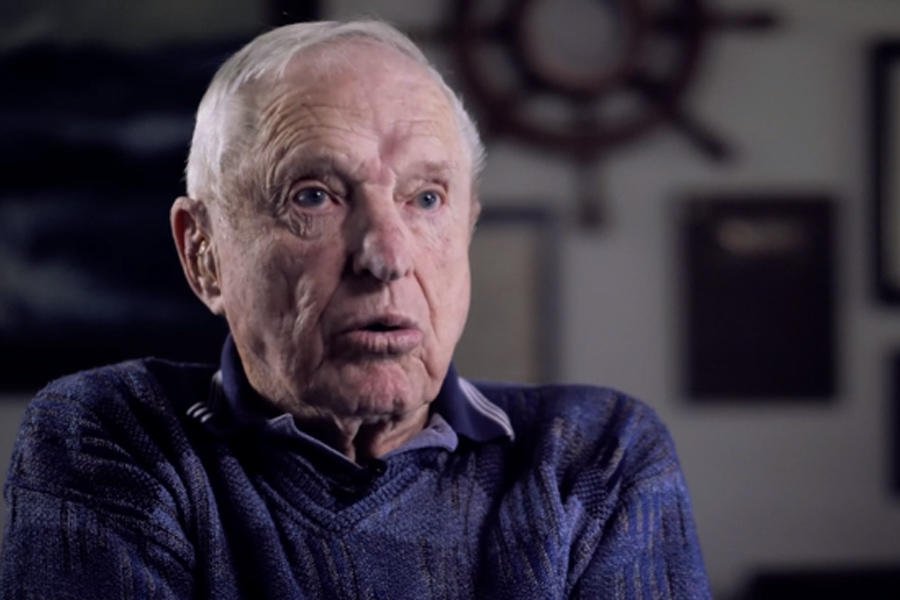
E. Royce Williams is being called a forgotten hero in a forgotten war — a military pilot whose heroic action was never fully recognized because his mission was filed away as top secret.
Now members of American Legion Post 416 in Encinitas want to shed light on the retired Navy captain’s distinguished service. They are campaigning to get him the Medal of Honor while he is still among us.
Read Next: This Historic Colt 1911 Pistol Carried at Iwo Jima Is About to Go Up for Auction
Williams, now 95, spent 37 years forging a highly regarded career in the U.S. Navy, retiring in 1980. But it was one dog fight — about 35 minutes long, off the coast of North Korea on Nov. 18, 1952 — that made him a hero.
For 40 years, Williams was mum about that encounter. He didn’t even tell his wife, Camilla — whom he met at age 11 in Sunday School — until 1992 or ’93, he says, after dissolution of the Soviet Union in December of 1991. But the word didn’t really get out until 50 years after the incident, after he was asked to address a military symposium in Pensacola, Fla.
On Nov. 18, 1952, Williams and three other Navy F9F-5 Panther pilots were dispatched from the aircraft carrier USS Oriskany to intercept seven Russian MiGs headed toward them from a Soviet base in Vladivostok.
Early that morning, Williams had taken part in an attack in western North Korea near the Soviet border. Based on U.S. intelligence reports, it was believed the MiGs were seeking revenge.
The fledgling National Security Agency (nicknamed No Such Agency because of its intelligence gathering role) had a unit aboard a nearby cruiser, the USS Helena, and was intercepting Soviet communications — a capability it did not want made public. This operation was reportedly the agency’s first and was assigned the code name Canoe, according to recently released classified documents.
Williams recalls the harrowing mission in great detail. The four Panthers took off in a blustery snowstorm. It wasn’t long before one of their jets developed a fuel pump problem and its pilot turned back toward the ship with his wingman as an escort. That left then-Lt. Williams and his wingman, pilot Dave Rowlands, to face seven much more sophisticated Soviet fighters. One of the downed MiG pilots was later reported to be a decorated war hero.
A MiG fired on Williams and the battle was on. He jockeyed for position and made a direct hit. As his wingman followed the wounded jet down into the clouds to document the kill, the other MiGs ganged up on Williams’ plane. He shot another MiG as it flew alongside, then had to dodge the debris as the jet disintegrated.
Williams vividly recalls the dogfight. He alternated between evasive action and getting close enough to take a shot, as the aircraft weren’t equipped with laser-guided weapons back then.
After downing the first MiG, Williams couldn’t confirm his kills. “I was too busy to start counting. I would fire at a plane and then someone else would be on my tail and I had to maneuver and I couldn’t tell what happened to the plane I shot,” he says.
Call it a combination of skill, experience, instinct, sheer luck and true grit, but Nov. 18, 1952 was not Williams’ day to die. Later it came out in military records that only two MiGs flew back toward Vladivostok that day. One, presumably damaged, was later said by a Russian military historian to have crashed en route to home.
Williams was forced to return to his carrier after being hit by a shell that damaged his hydraulic and electrical systems. He lost his rudder and most of his turning ability but retained his elevators so he could still go up and down. So, down he flew, headed for cloud cover with a MiG on his tail. He recalls jerking his plane higher and lower to evade a barrage of shots.
But even then Williams’ battle was not over. He briefly encountered friendly fire as he approached his carrier. He also discovered that his damaged plane couldn’t fly below a speed of 170 knots (105 knots was his normal tailhook landing speed). He survived because, in an unusual move, the carrier captain changed the direction of the ship to align it with Williams’ flight path.
Despite landing at breakneck speed, miraculously Williams’ only injury was a bloody neck from the chafing of his extreme weather gear as he turned his head from side to side to engage the enemy.
His Panther was in far worse condition with 263 holes, including a gash nearly a foot long.
After a hastily written battle report, for which Williams says the pilots hadn’t been debriefed, he and pilot John Middleton earned Silver Stars, and Rowlands was credited with damaging a plane and awarded a Distinguished Flying Cross.
The mission, which could have sparked an international incident and a major clash with the Soviet Union, was put under wraps. Williams was instructed by his commanding officer not to talk about it.
So he didn’t. It wasn’t until several years later that Rear Adm. Doniphan Shelton learned of Williams’ heroics. Six years ago Shelton began a campaign to get the pilot the recognition Shelton insists he deserves. He compiled background information, filed a request for documents under the U.S. Freedom of Information Act and drafted a resolution requesting a Medal of Honor for heroism Shelton calls “unmatched either in the Korean War, the Vietnam War, or since then.”
“Four MiG-15s down over a period of time is one thing, quite another when those four are downed in one historic 35-to-38-minute aerial engagement of one F9F-5 against seven very superior MiG-15s,” says Shelton, who lives in Del Mar. He concedes that the engagement was not well recorded and errors were made in reporting the details.
“Success in this case is an uphill battle,” Shelton says. “The Navy likes to stick by its records even in instances when those records are in error, as in this instance.”
Peter-Rolf Ohnstad Jr., with American Legion Post 416, has been helping with the quest. He says the Medal of Honor resolution was approved by the regional American Legion district, “enthusiastically endorsed” by the state American Legion and “overwhelmingly approved” at the group’s national convention in 2017.
“Williams has never sought this recognition,” Ohnstad notes. “He is the quietest, humblest person I’ve ever met.”
A replica of Williams’ Panther sits on the USS Midway Museum flight deck bearing four MiG kill symbols, but the true story of that fateful afternoon 68 years ago may never be known.
Williams tells his version of the battle during an interview with San Diegan Philip Graham for a new syndicated radio show, “Our American Stories,” reminiscent of Paul Harvey and produced by the nonprofit American Private Radio company.
Williams is taking the quest for a Medal of Honor in stride. It’s in his past. He says he doesn’t expect any additional recognition. What is currently on his mind is climbing aboard a World War II plane on Memorial Day in Riverside and flying with one of 18 vintage warbird pilots over Southern California to pay tribute to veterans of all conflicts.
This article is written by Diane Bell from The San Diego Union-Tribune and was legally licensed via the Tribune Content Agency through the NewsCred publisher network. Please direct all licensing questions to legal@newscred.com.
© Copyright 2020 The San Diego Union-Tribune. All rights reserved. This material may not be published, broadcast, rewritten or redistributed.



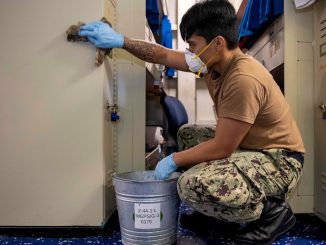
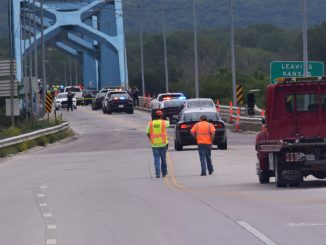
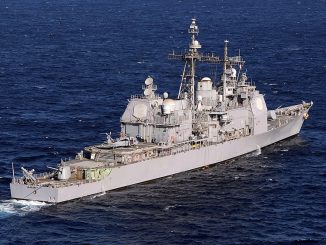
Be the first to comment